When my wife and I decided to start cruising together, we acquired a 19′ Phil Bolger–designed Chebacco gaff cat-yawl and quickly realized that we’d need to find a dinghy as well. Although it will float in a foot of water, the Chebacco’s weight and bulk make shore landing more challenging than we are used to in either our Oughtred Arctic Tern or Adirondack guideboat, both of which can be easily beached. Moreover, we cruise the tidal waters of Oregon and Washington, where the possibility of being stuck aground in an outgoing tide makes it prudent to anchor out and row ashore.The first season we towed a plastic sit-on-top kayak. It was easy to transport and light enough to carry solo, but it was a wet ride, had no cargo capacity, and was challenging to climb aboard from the Chebacco.The following winter, I researched other lightweight options, including an inflatable packraft, as well as some plywood boats like the Nutshell Pram. I eliminated the packraft because it seemed it would sit low in the water and be another wet ride. While the Nutshell is a proven design, at 90 lbs it would be too heavy to lift and carry by myself.
Join The Conversation
We welcome your comments about this article. To include a photo with your remarks, click Choose File below the Comment box.

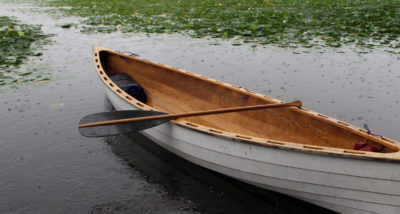
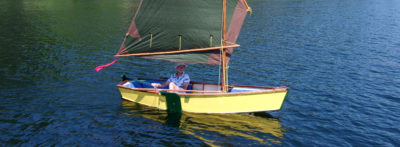
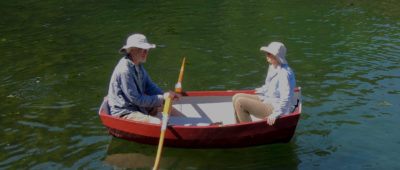
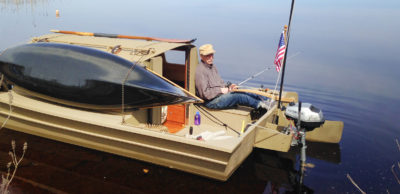

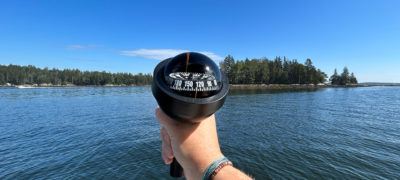
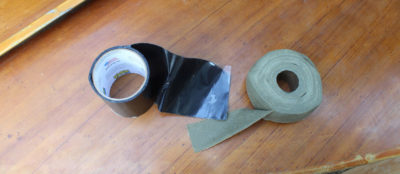
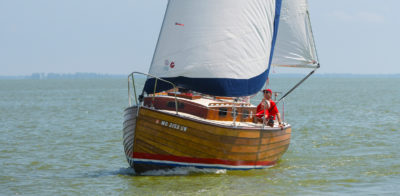
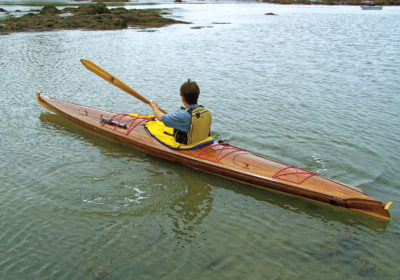
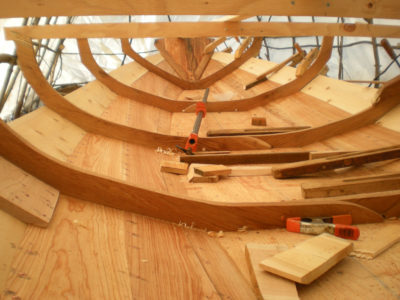
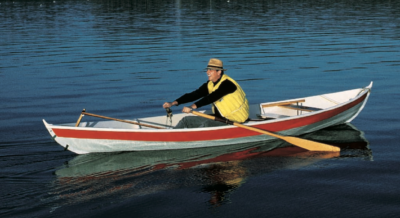
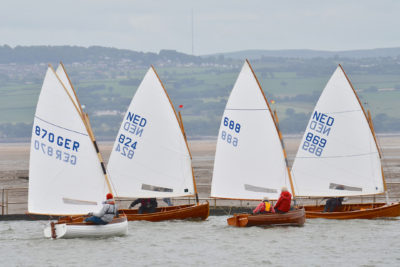
Are plans only available?
Duckworks implies that you can buy plans, but I could not find anything besides the kit on their website.
Billy Atkin designed a similar little pram that he called “Tiny Ripple,” which was one of the designs in the MoTorBoaTing Ideal series. His was only 6′ long. It had only single plank (i.e. no topside curvature) flaring topsides, instead of the rounded configuration seen here. Atkin always argued for flare–sometimes extreme flare–on the grounds that it increased safety and secondary stability. He claimed that this tiny boat could function as a life boat, with watertight compartments at bow and stern. I never put it to the test.
I quickly realized that the full thwart across the stern made it very uncomfortable for rowing from the center station (even though I am not a tall guy), so I made the aft seat narrow enough that I could comfortably plant my feet against the stern transom. And I built mine out of 1/4″ fir plywood rather than the solid cedar planks Atkin called for. Had Brynzeel or one of the other high-quality marine plywoods been available at the time I would have used something around 4 mm in thickness, thereby saving weight. I made a finger slot in the forward edge of the little stern seat, which made carrying the pram upright the easiest way.
I towed the dinghy behind my little 21′ Ed Monk Sr. cutter all around the San Juan Islands. One time, sailing with a fresh breeze on a broad reach up the Strait of Georgia into swells rolling down from the north, the dinghy was planing with a taught towline. A pair of dolphins picked us up briefly, then one of them dropped back to check out the dinghy. Both the cutter and the dinghy seemed to come alive and did a lively dance in that rare, perfect combination of wind and waves. One of my most cherished memories.
I was always pleased with the rowing qualities of Tiny Ripple. It tracked quite well, even with a small single skeg, and went almost as easily with an extra crew member. In the harbor, I could easily outpace the little Livingston dinghies of similar size. I built at least two of these, including one for my dad. He used his for fishing in the small lakes around Lake Chelan in Washington state, often taking my mother along. I believe he sometimes made it go with a small electric outboard.